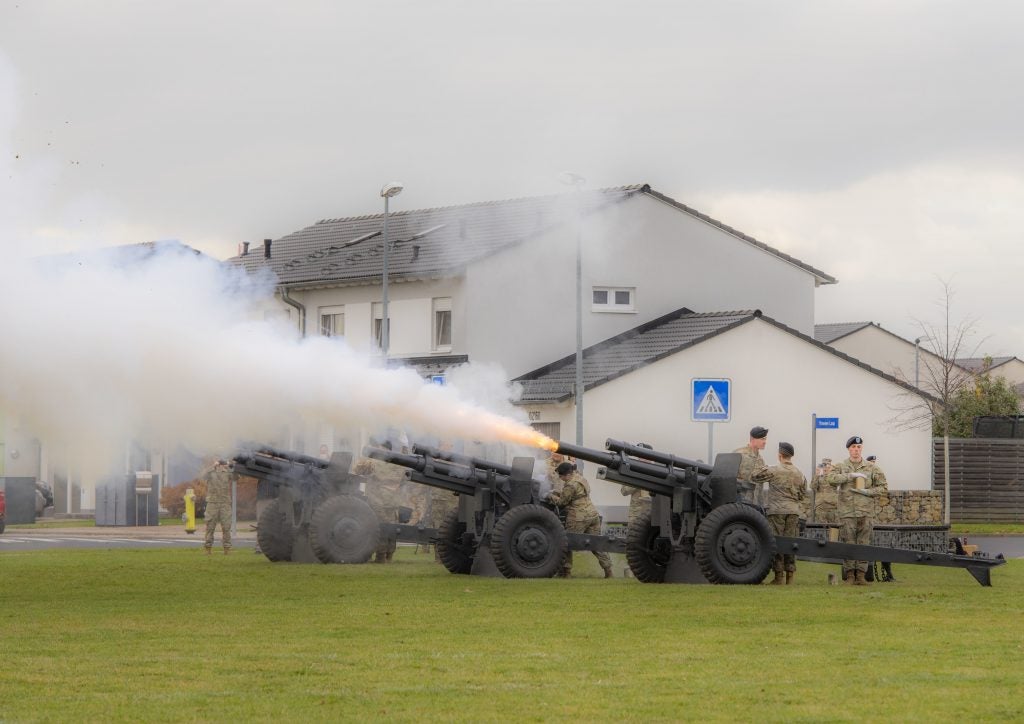US Army Reactivates Former Pershing Missile Unit As European Theater Fires Command
U.S. Army Europe and Africa officially reactivated the 56th Artillery Command as the Theater Fires Command on Monday, with a ceremony held on Allen Field at Clay Kaserne.
In a statement made prior to the ceremony, the unit’s commanding general, Maj. Gen. Stephen J. Maranian, said that “the reactivation of the 56th Artillery Command will provide U.S. Army Europe and Africa with significant capabilities in multi-domain operations”. He added that the reactivation would “further enable the synchronization of joint and multinational fires and effects, and employment of future long range surface to surface fires across the U.S. Army Europe and Africa area of responsibility.”
During the ceremony, the colors of the 56th Artillery Command were uncased, with the unit’s Command Sgt. Maj., Darrel Walls, handing them to Gen. Christopher Cavoli, commanding general of U.S. Army Europe and Africa. The colors were in turn handed to Maj. Gen. Maranian, who formally accepted his command of the unit.

Gen. Cavioli said at the ceremony that the reactivation of the 56th was another milestone for the U.S. Army and U.S. Army Europe and Africa, being crucial to planning and coordinating the employment of multi-domain fires and effects. Maj. Gen. Maranian thanked the unit’s staff for their preparations over the past two years for the unit’s move to their new home base in Wiesbaden while participating in exercises. Additionally, he thanked Installation Management Command Europe and Wiesbaden Garrison for the support rendered during the command’s move to its new headquarters with the 2nd Multi-Domain Task Force on Mainz-Kastel.
The 56th Artillery Command takes its lineage from the 56th Field Artillery Command, which last served on active duty as the European Theater’s Pershing Missile Headquarters from 1986 to 1991. The unit was inactivated in June 1991, after the disposal of the last of its Pershing II medium-range nuclear ballistic missiles following the 1988 ratification of the Intermediate-Range Nuclear Forces Treaty that banned them.

Since the collapse of the treaty in 2019 over allegations of Russian treaty violations, the United States Army has begun developing new missiles or modifying existing missiles to be capable of reaching ranges previously banned under the INF, such as ground-launched Tomahawk Cruise Missiles and the Precision Strike Missile. As shown by Maj. Gen. Maranian’s comments, the U.S. Army is now laying the foundations for the fielding of these new missile capabilities in Europe.

